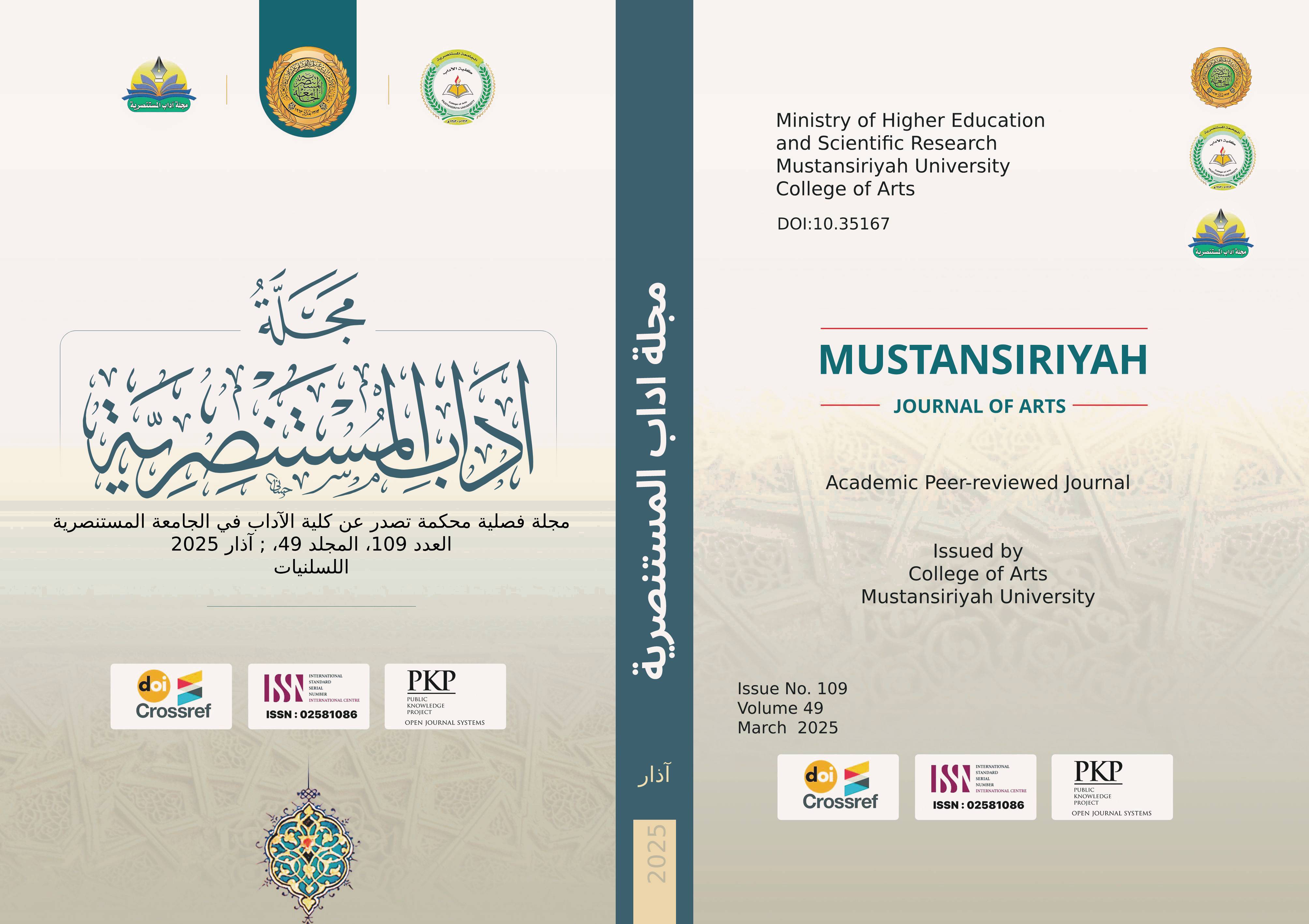Visual Formation in the Poems of Mahmoud Darwish and Walt Whitman
Abstract
Tracing the stages of development of the poems of Mahmoud Darwish and Walt Whitman reveals the gradual evolution from the chant to the poetic editing, and the employment of the features of visual formation in breaking the restrictions of the textual structure and expanding its meaning to contemporary connotations and suggestions, as this research seeks to enhance the process of communication between the poet and the reader through the blending of the linguistic and visual aspects. The objectives of this research lie in describing the concept of visual value in the poems of Mahmoud Darwish and Walt Whitman, analyzing the visual value in the poems of the poets Mahmoud Darwish and Walt Whitman, and then stating the similarities and differences in the forms of visual value in their poems. Based on the descriptive analytical method and the comparative method; To analyze and compare the selected models from "Diwan", "Don't Apologize for What You've Done" by Mahmoud Darwish, and "Leaves of Grass" by Walt Whitman. This research reached valuable results, the most important of which is that the poetic image in Mahmoud Darwish's poems benefited from visual values as a phenomenon that supports the psychological and objective position, while in Walt Whitman's poems, it acquired visual values in adding aesthetic and semantic dimensions. As for the similarities and differences, the similarity lies in the liberation of the poetic text from rigidity and monotony through visual dimensions embodied in revealing the unspoken suggestions, and the difference in contemporary visual paths that try to replace verbal images with visual images.
Downloads
Published
Issue
Section
License

This work is licensed under a Creative Commons Attribution-ShareAlike 4.0 International License.


